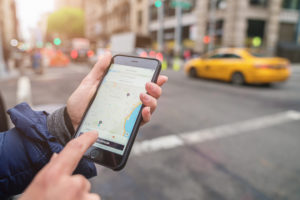
Ride-sharing has become a primary mode of transportation in many cities and for many people and is possibly the most visible evidence of the ways that technology is transforming transportation. Now, the ride-sharing apps are taking it one step further in a move that will provide a boost to Miami Dade County’s SMART plan, which includes a massive transit expansion and the viability of mass transit P3s. Just this month, Lyft announced that it is updating its app with two major technological advancements.
First, the new app aims to increase shared rides to make up 50% of the Lyft ridership by the end of 2020. Lyft calls it “shared rides”, Uber calls it “Uber Pool”, and both are integral to reducing cars on the road and decreasing traffic congestion. Second, and even more significantly, the new version of the app will sync directly with public transit systems to improve the passenger experience on public transit and with Lyft. When riders select a destination, they will see public transit options as part of their navigation details. Lyft is also partnering with cities outside central hubs to enable residents within that service area to access discounted rides to bus and rail stations, solving first mile/last mile transportation issues, and making transportation more affordable. In fact, Lyft is among the ride-sharing apps that have coordinated with Miami’s own Brightline to provide first mile/last mile connectivity. Lyft is also working with transit systems to make rides more available and affordable during times of congestion on public transit.
Lyft is not alone in this endeavor. Uber is also partnering with local governments and transit agencies to integrate its platform with public transit but has yet to roll out the new technology. These private solutions to the problems that face public transit agencies and local governments inject technological innovation into public transit. This makes transit better for passengers by providing convenience and filling gaps in service and better for governments by boosting ridership, defraying infrastructure costs, and making transit P3s more viable, thus setting the stage for future innovation. As Miami and other major cities continue to expand their public transportation systems, these types of transit P3s will maximize innovation and minimize the burden on the local governments and passengers that rely on that transit every day.
